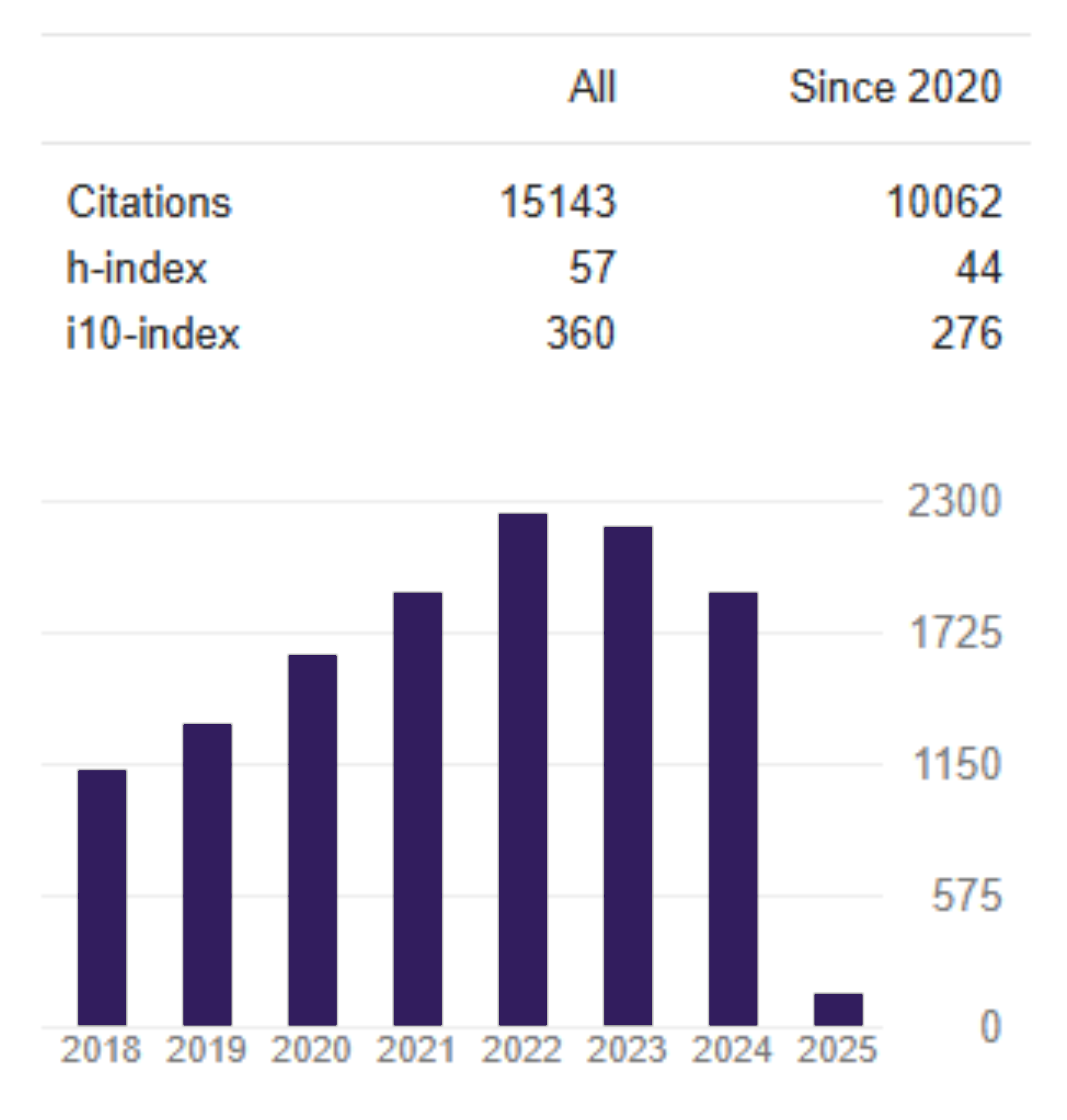Intellectual capital and bank profitability: Evidence from conventional and Islamic bank in Indonesia
DOI:
https://doi.org/10.26905/jkdp.v23i2.3028Keywords:
Bank profitability, Intellectual capital, Value Added Intellectual Capital (VAIC)Abstract
This study investigates the effect of intellectual capital on bank profitability. In addition, we also analyze the effect of intellectual capital on bank profitability based on bank types, conventional and Islamic bank. Our data consist of conventional and Islamic banks operated in Indonesia from 2010 to 2016 annually. Since our data are a panel, we employ panel regression. Intellectual capital is measured by using Value Added Intellectual Capital (VAIC). Our result shows that intellectual capital has a positive significant impact on bank profitability. After data classified based on bank types, intellectual capital only has a positive significant effect on conventional bank profitability. We also attempt to estimate the impact of VAIC components, such as Human Capital Efficiency (HCE), Structural Capital Efficiency (SCE) and Capital Employed Efficiency (CEE), on bank profitability. The results show that the impact of HCE is strongly significant in both banks. However, CEE and SCE do not have a significant effect on both types of bank profitability. Our results indicate that conventional banks synergize their intellectual and physical capital in creating profit better than Islamic banks. Thus, this research could be a critique of the Indonesian Islamic banking industry in determining and overcome their weakness.
JEL Classification: G21, G32, G32
Downloads
References
Bayburina, E., & Golovko, T. (2009). Design of sustainable development: Intellectual value of large BRIC companies and factors of their growth. Electronic Journal of Knowledge Management, 7(5), 535-558.
Bontis, N. (1999). Managing organizational knowledge by diagnosing intellectual capital: framing and advancing the state of the field. International Journal of Technology Management, 18(5), 433-463. https://doi.org/10.1504/ijtm.1999.002780
Chahal, H., & Bakshi, P. (2016). Measurement of intellectual capital in the Indian banking sector. The Journal for Decision Makers, 41(1), 61-73. https://doi.org/10.1177/0256090916629253
Demirguc-Kunt, A., & Huizinga, H. (2000). Financial structure and bank profitability. World Bank Policy Research Working Paper No. 2430. https://doi.org/10.1596/1813-9450-2430
Delis, M. D., Kokas, S., & Ongena, S. (2017). Bank market power and firm performance. Review of Finance, 21(1), 299-326. https://doi.org/10.1093/rof/rfw004
Garcia-Meca, E., & Martinez, I. (2005). Assessing the quality of disclosure on intangibles in the Spanish Capital Market. European Busines Review, 17(4), 305-313. https://doi.org/10.1108/09555340510607352
Goddard, J.A., Molyneux, P.M., & Wilson, J.O.S. (2004). Dynamics of growth and profitability in banking. Journal of Money, Credit, and Banking, 36(6), 1069-1090. https://doi.org/10.1353/mcb.2005.0015
Khairiyansyah, K., & Vebtasvili, V. (2018). Relationship between intellectual capital with profitability and productivity in Indonesian banking industry. Jurnal Keuangan Perbankan, 22(1), 127-136. https://doi.org/10.26905/jkdp.v22i1.1577
Khan, H., & Ali Mohobbot, M. (2010). An empirical investigation and users’ perceptions on intellectual capital reporting banks. Journal of Human Resource Costing and Accounting, 14(1), 48-69. https://doi.org/10.1108/14013381011039799
Le, T.P.V., & Phan, T.B.N. (2017) Capital structure and firm performance: empirical evidence from small transition country. Research in International Business and Finance, 42, 710-726. https://doi.org/10.1016/j.ribaf.2017.07.012
Meles. A., Porzio, C., Sampagnaro, G., & Verdoliva. V. (2016). The impact of intellectual capital efficiency on commercial banks performance: Evidence from The US. Journal of Multinational Financial Management, 36, 64-74. https://doi.org/10.1016/j.mulfin.2016.04.003
Menicucci, E., & Paolucci, G. (2016). The determinants of bank profitability: Empirical evidence from European banking sector. Journal of Financial Reporting and Accounting, 14(1), 86-115. https://doi.org/10.1108/jfra-05-2015-0060
Mondal, A., & Ghosh, S. K. (2012). Intellectual capital and financial performance of Indian banks. Journal of Intellectual Capital, 13(4), 515-530. https://doi.org/10.1108/14691931211276115
Nawaz, T., & Haniffa, R. (2017). Determinants of financial performance of Islamic banks: An intellectual capital perspective. Journal of Islamic Accounting and Business Research, 8(2), 130-142. https://doi.org/10.1108/jiabr-06-2016-0071
Ousama, A. A., & Fatima, A. H. (2015). Intellectual capital and financial performance of Islamic banks. International Journal of Learning and Intellectual Capital, 12(1), 1-15. https://doi.org/10.1504/ijlic.2015.067822
Ozkan, N., Cakan, S., and Kacayan, M. (2017). Intellectual capital and financial performance: A study of the Turkish Banking Sector. Borsa Istanbul Review, 17(3), 190-198. https://doi.org/10.1016/j.bir.2016.03.001
Pulic, A. (1998). Measuring the performance of intellectual potential in knowledge economy. Presented in the 2nd McMaster World Congress on Measuring and Managing Intellectual Capital.
Puntillo, P. (2009). Intellectual capital and business performance. Evidence from Italian banking industry. Electronic Journal of Corporate Finance, 4(12), 97-115.
Rehman, W., Rehman, H., Usman, M., & Ashgar, N. (2012). A link of intellectual capital performance with corporate performance: Comparative study from banking sector in Pakistan. International Journal of Business and Social Science, 3(12), 313-321.
Shaban, M., Duygun, M., Anwar, M., & Akbar, B. (2014). Diversification and banks’ willingness to lend to small business: Evidence from Islamic and conventional banks in Indonesia. Journal of Economic Behavior and Organization. 103, 539-555. https://doi.org/10.1016/j.jebo.2014.03.021
Shaikh, S. A. (2014). Analysis of challenges and opportunities in Islamic banking. International Journal of Financial Services, 7, 286-300. https://doi.org/10.1504/ijfsm.2014.065581
Sufian, F., & Chong, R. R. (2008). Determinants of bank profitability in a developing economy: Empirical evidence from Philipines. Asian Academy of Management Journal of Accounting and Finance, 4(2), 91-112.
Susamto, A. A. (2018). Toward a new framework of Islamic economic analysis. Universitas Gadjah Mada Working Papers on Islamic Economics and Finance, 1(2).
Tan, Y., & Floros, C. (2012). Bank profitability and inflation: The case of China. Journal of Economic Studies, 39(6), 675-696. https://doi.org/10.1108/01443581211274610
Ting, I. W. K., & Lean, H. H. (2009). Intellectual capital performance of financial institutions in Malaysia. Journal of Intellectual Capital, 10(4), 588-599. https://doi.org/10.1108/14691930910996661
Downloads
Additional Files
Published
Issue
Section
License

This work is licensed under a Creative Commons Attribution-ShareAlike 4.0 International License.



